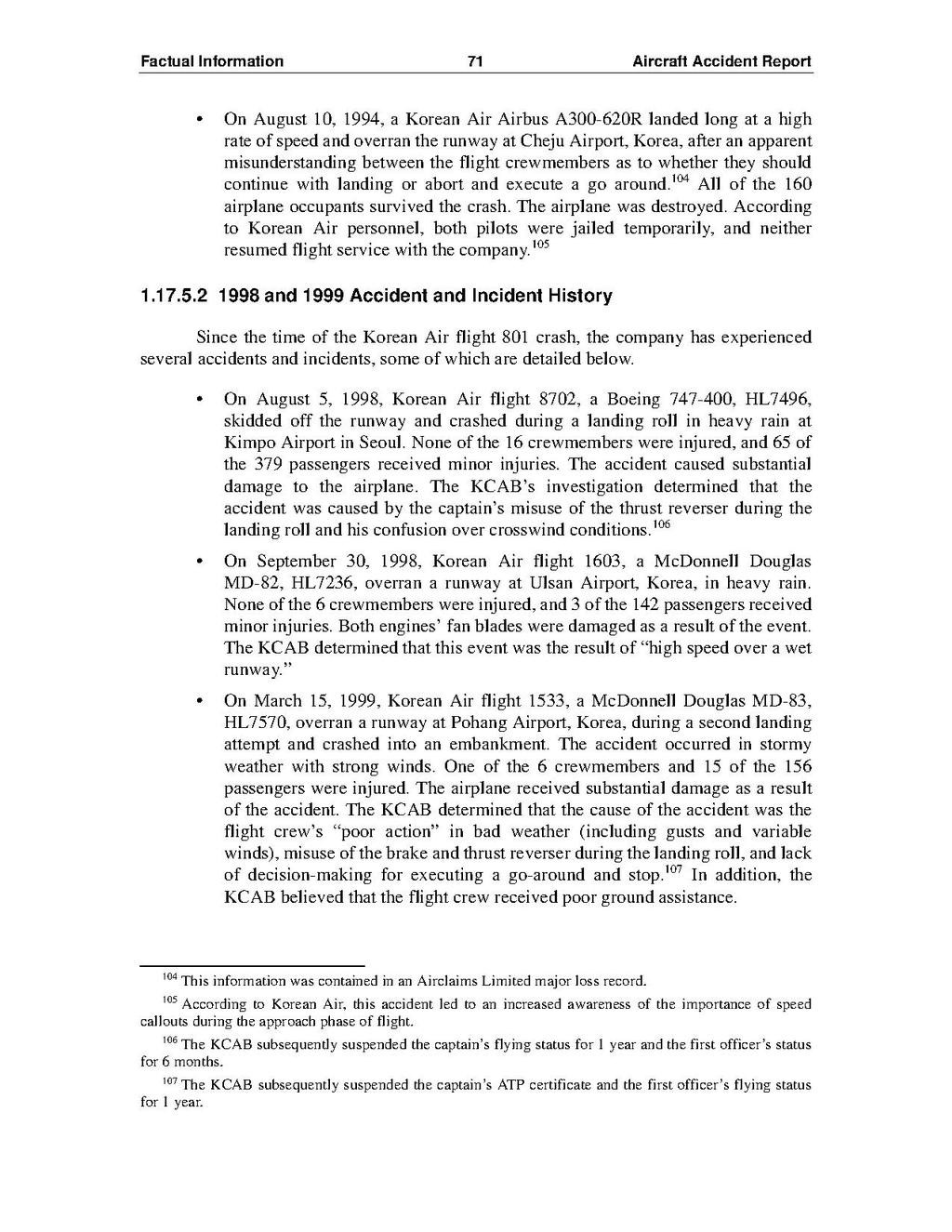Factual Information
71
Aircraft Accident Report
- On August 10, 1994, a Korean Air Airbus A300-620R landed long at a high rate of speed and overran the runway at Cheju Airport, Korea, after an apparent misunderstanding between the flight crewmembers as to whether they should continue with landing or abort and execute a go around.[1] All of the 160 airplane occupants survived the crash. The airplane was destroyed. According to Korean Air personnel, both pilots were jailed temporarily, and neither resumed flight service with the company.[2]
1.17.5.2 1998 and 1999 Accident and Incident History
Since the time of the Korean Air flight 801 crash, the company has experienced several accidents and incidents, some of which are detailed below.
- On August 5, 1998, Korean Air flight 8702, a Boeing 747-400, HL7496, skidded off the runway and crashed during a landing roll in heavy rain at Kimpo Airport in Seoul. None of the 16 crewmembers were injured, and 65 of the 379 passengers received minor injuries. The accident caused substantial damage to the airplane. The KCAB's investigation determined that the accident was caused by the captain's misuse of the thrust reverser during the landing roll and his confusion over crosswind conditions.[3]
- On September 30, 1998, Korean Air flight 1603, a McDonnell Douglas MD-82, HL7236, overran a runway at Ulsan Airport, Korea, in heavy rain. None of the 6 crewmembers were injured, and 3 of the 142 passengers received minor injuries. Both engines' fan blades were damaged as a result of the event. The KCAB determined that this event was the result of "high speed over a wet runway."
- On March 15, 1999, Korean Air flight 1533, a McDonnell Douglas MD-83, HL7570, overran a runway at Pohang Airport, Korea, during a second landing attempt and crashed into an embankment. The accident occurred in stormy weather with strong winds. One of the 6 crewmembers and 15 of the 156 passengers were injured. The airplane received substantial damage as a result of the accident. The KCAB determined that the cause of the accident was the flight crew's "poor action" in bad weather (including gusts and variable winds), misuse of the brake and thrust reverser during the landing roll, and lack of decision-making for executing a go-around and stop.[4] In addition, the KCAB believed that the flight crew received poor ground assistance.
- ↑ This information was contained in an Airclaims Limited major loss record.
- ↑ According to Korean Air, this accident led to an increased awareness of the importance of speed callouts during the approach phase of flight.
- ↑ The KCAB subsequently suspended the captain's flying status for 1 year and the first officer's status for 6 months.
- ↑ The KCAB subsequently suspended the captain's ATP certificate and the first officer's flying status for 1 year.
